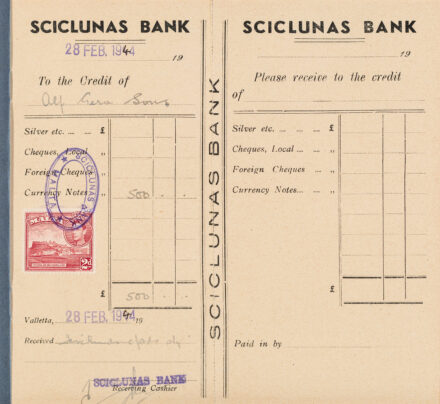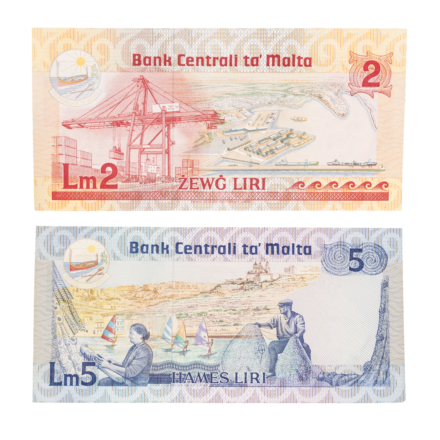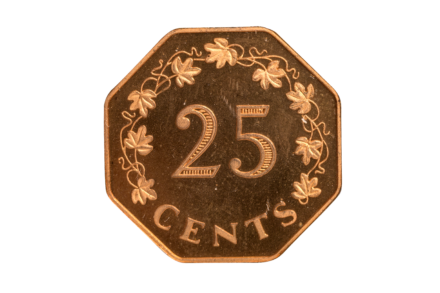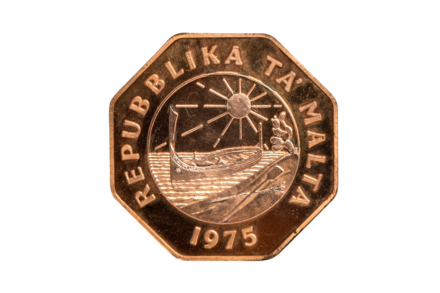
Postwar Atlas Assurance policy application forms, from the Atlas collection.
It has often been said that all roads lead to Rome; in Maltese history practically all roads lead to the sea and our harbours, or nowadays the airport. In fact, as I often tell my students, without its harbours the Maltese Islands would have followed the same development path as their close neighbours Lampedusa and Pantelleria.
It was Malta’s harbours that anchored the Order of St. John to our islands, in a relationship that brought mutual benefits. Similarly, it was the same harbours that were both cause and focus of massive British investments in Malta, particularly in the second half of the 19th Century and the early years of the 20th, when Malta became the Royal Navy’s premier base in the Mediterranean, host to a large dockyard employing thousands and an important link in the British Empire’s communications. Military spending and the naval dockyard continued to be the main driver of the Maltese economy until well after WW2
The inhabitants of the Maltese Islands have to some extent always needed access to external resources – even their prehistoric inhabitants, who are known to have used obsidian tools, the raw material for which was unavailable in Malta – but I would say that up to the early 1500s and for centuries before that, the trade of the Maltese Islands mostly reflected their resource base, and the needs and capabilities of the indigenous population. With the arrival of the Order and, later, of the British, a significant new element was introduced, external actors with interests that were distinct from those of the islands’ indigenous inhabitants and that controlled substantial external resources that could be brought to bear on the promotion of such interests.

1986 issue banknotes featuring pictorial representations of Malta’s industries and their development. On loan from Central Bank of Malta.
Thus, since the arrival of the Order in 1530 the evolution of the Maltese Islands has primarily been a function of its links with the outside world. The strengthening and deepening of links accelerated economic and social development, and the nature of such links shaped the structure of the economy, but the fundamental fact that Malta grew more open as its economy and society became more sophisticated remained. Thus, although the structure of the Maltese economy has changed radically across the centuries, the Maltese Islands have continued to rely on the inflow of resources from abroad, most recently FDI, export revenues and lately expatriate workers, this dependence having grown deeper as the Maltese economy grew and evolved. So much so that the Maltese economy is among the most dependent on foreign trade in the world when total trade is expressed as a percentage of GDP (according to the World Bank, 318% in 2022, compared to 337% for Singapore and 234% for Ireland). In spite of annual fluctuations this dependence is also growing over the longer term: in 1970 it was 116%, rising to 167% in 1980 and to 249% in 2000. This characteristic is not simply an interesting statistical fact: it is also critical for our standards of living, which started to delink from Malta’s indigenous material resources centuries ago.


The octagonal 25 cents coin with the old Emblem of Malta introduced in 1975. On loan from Central Bank of Malta.
A similar path has been followed by Atlas Insurance, its ancestor companies and the sector of which they form part. Initially primarily concerned with maritime insurance, Malta’s insurance sector has evolved in line with the country’s economy, reflecting moves towards greater economic autonomy and expanding the range of risks covered as the economy grew in complexity. Atlas, and its constituent companies, have followed the same trajectory, starting out in the 1920s, when Malta’s dependence on Britain was at its peak, as the agent of UK-based insurers, but continuously evolving as it reacted to market changes, and finally achieving the scale that allowed it to apply for, and obtain in 2004, a licence to operate as an autonomous insurer. Thus, almost a century later, Atlas has, like Malta itself, declared its independence and is making its own way in the world. Long may it continue to do so.


Postwar Atlas Assurance policy application forms, from the Atlas collection.